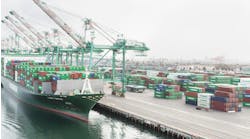Digital replicas of living or non-living physical entities, digital twins are making their way into the business world right along with more mainstream concepts like artificial intelligence (AI), machine learning (ML), and the Internet of Things (IoT). In plain English, IBM defines the digital twin as a highly complex virtual model that is the exact counterpart (or twin) of a physical thing. It could be a car, tunnel, bridge or even a jet engine.
“Connected sensors on the physical asset collect data that can be mapped onto the virtual model,” IBM adds, which means that “anyone looking at the digital twin can now see crucial information about how the physical thing is doing out there in the real world.”
The Digital Twin-Procurement Link
The link between procurement and digital twins may not be immediately clear to the average person, but the concept is already being used in the supply chain. In a new report on technology trends, Deloitte opens up the discussion by talking about how digital twins can bridge the gap between the physical and the digital, and points out that the idea of using virtual models to optimize processes, products or services isn’t new.
What is new is how organizations are learning that increasingly sophisticated simulation and modeling capabilities, power visualization, better interoperability and IoT sensors—and more widely available platforms and tools—are enabling the creation of simulations that are “more detailed and dynamic than ever,” Deloitte says in its report. “Digital twins can increase efficiency in manufacturing, optimize supply chains, transform predictive field maintenance, aid in traffic congestion remediation, and much more.”
For example, it says organizations making the transition from selling products to selling bundled products and services—or selling as-a-service—are using more digital twins.
“As capabilities and sophistication grow, expect to see more organizations use digital twins to optimize processes, make data-driven decisions in real time, and design new products, services and business models,” Deloitte adds. “In the long-term, realizing digital twins’ full promise may require integrating systems and data across entire ecosystems.”
Twins in the Supply Chain
Digital twins can help optimize supply chains, distribution and fulfillment operations, and also the individual performance of the workers involved in each of those operations. For example, Unilever’s digital twin project focuses on creating virtual models of dozens of its factories. At each location, IoT sensors embedded in factory machines feed performance data into AI and machine learning applications for analysis, Deloitte explains.
“The analyzed operational information is to be fed into the digital twin simulations,” it continues, “which can identify opportunities for workers to perform predictive maintenance, optimize output and limit waste from substandard products.”
In a recent tech briefing on digital twins, the Chartered Institute of Procurement & Supply (CIPS) discusses the use of the technology to manage supply chains and enable end-to-end delivery of digitally monitored products. It points to one city in India that’s developing a digital twin of a new capital city to monitor environmental conditions during construction and a future traffic management system.
CIPS mentions DHL’s launch of a digital twin warehouse in Asia, where, by combining IoT and analytics, the customer can monitor and simulate the state and behavior of the warehouse assets in real-time, resolve issues as they occur and improve both safety and productivity.
On a Growth Trend
With a projected compound annual growth rate (CAGR) of 38%, the digital twin market is expected to grow to $35.8 billion by 2025 (up from $3.8 billion last year). The trend is gaining momentum due to “rapidly evolving simulation and modeling capabilities, better interoperability and IoT sensors, and more availability of tools and computing infrastructure,” according to Deloitte.
Concurrently, access to larger volumes of data is making it possible to create simulations that are more detailed and dynamic than ever. “For long-time digital twin users, it’s like moving from fuzzy, black-and-white snapshots to colorful, high-definition digital pictures,” Deloitte concludes. “The more information they add from digital sources, the more vivid—and revealing—the pictures become.”










